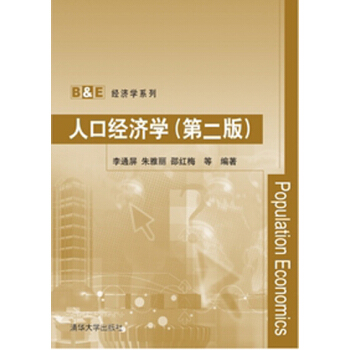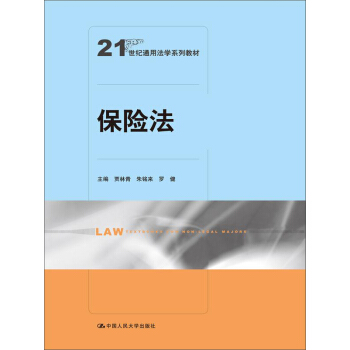![國際知名大學原版教材·信息技術學科與電氣工程學科係列:電路基礎(英文版)(附CD-ROM光盤1張) [Fundamentals of Electric Circuits]](https://pic.windowsfront.com/11151615/rBEHaVDdBIgIAAAAAAcD42wHaQ4AADcpQGBEiQABwP7955.jpg)
國際知名大學原版教材·信息技術學科與電氣工程學科係列:電路基礎(英文版)(附CD-ROM光盤1張) [Fundamentals of Electric Circuits] pdf epub mobi txt 電子書 下載 2025
- 電路基礎
- 英文教材
- 電氣工程
- 信息技術
- 大學教材
- 原版教材
- Fundamentals of Electric Circuits
- CD-ROM
- 高等教育
- 理工科

具體描述
內容簡介
《國際知名大學原版教材·信息技術學科與電氣工程學科係列:電路基礎(英文版)》是學習電路(該課程是大學工科電類和相近各專業的共同的技術基礎課)的教科書。此書所選內容均為電路課程的基礎知識,它與當前國內外高校在對該課程內容的取捨上的做法大體一緻。全書大緻分為三部分:(1)直流電路、電路定律、電路元件;(2)交流電路、相量法、電功率、三相電路、頻率響應;(3)拉普拉斯變換、傅裏葉變換、雙口網絡。該書在編寫、教學方法上的安排頗有特色:講解明白易懂;有大量的例題、習題;有用電路分析軟件分析電路的內容;每章末有應用實例,幫助讀者認識電路概念的應用。
《國際知名大學原版教材·信息技術學科與電氣工程學科係列:電路基礎(英文版)》可供學習電路課的大學生作為教科書使用,亦可供有關技術人員、高校教師參考。
內頁插圖
目錄
PrefaceAcknowledgments
A Note to the Student
PART1 DC CIRCUITS
Chapter1 Basic Concepts
1.1 Introduction
1.2 Systems of Units
1.3 Charge and Current
1.4 Voltage
1.5 Power and Energy
1.6 Circuit Elements
1.7 Applicalions
1.7.1 TV Picture Tube
1.7.2 Electricity Bills
1.8 Problem Solving
1.9 Summary
Review Questions
Problems
Comprehensive Problems
Chapter 2 Basic Laws
2.1 Introduction
2.2 Ohms Laws
2.3 Nodes, Branches, and Loops
2.4 Kirchhoffs Laws
2.5 Series Resistors and Voltage Division
2.6 Parallel Resistors and Current Division
2.7 Wye-Delta Transformations
2.8 Applications
2.8.1 Lighting Systems
2.8.2 Design of DC Meters
2.9 Summary
Review Questions
Problems
Comprehensive Problems
Chapter 3 Methods of Analysis
3.1Introduction
3.1 Nodal Analysis
3.3 Nodal Analysis with Voltage Sources
3.4 Mesh Analysis
3.5 Mesh Analysis with Current Sources
3.6 Nodal and Mesh Analyses by Inspection
3.7 Nodal Versus Mesh Analysis
3.8 Circuit Analysis with PSpice
3.9 Applications: DC Transistor Circuits
3.10 Summary
Review Questions
Problems
Comprehensive Problems
Chapter 4 Circuit Theorems
4.1 Introduction
4.2 Linearity Property
4.3 Superposition
4.4 Source Transformation
4.5 Thevenins Theorem
4.6 Nortons Theorem
4.7 Derivations of Thevenins and Nortons Theorems
4.8 Maximum Power Transfer
4.9 Verifying Circuit Theorems with PSpice
4.10 Applications
4.10.1 Source Modeling
4.10.2 Resistance Measurement
4.11 Summary
Review Questions
Problems
Comprehensive Problems
Chapter 5 Operational Amplifier
5.1 Introduction
5.2 Operational Amplifiers
5.3 Ideal Op Amp
5.4 Inverting Amplifier
5.5 Noninverting Amplifier
5.6 Summing Amplifier
5.7 Difference Amplifier
5.8 Cascaded Op Amp Circuits
5.9 Op Amp Circuit Analysis with PSpice
5.10 Applications
5.10.1 Digital-to Analog Convener
5.10.2 Instrumentation Amplifiers
5.11 Summary
Review Questions
Problems
Comprehensive Problems
Chapter 6 Capacitors and Inductors
6.1 Introduction
6.2 Capacitors
6.3 Series and Parallel Capacitors
6.4 Inductors
6.5 Series and Parallel Inductors
6.6 Applications
6.6.1 Integrator
6.6.2 Differentiator
6.6.3 Analog Computer
6.7 Summary
Review Questions
Problems
Comprehensive Problems
Chapter 7 First-Order Circuits
7.1 Introduction
7.2 The Source-free RC Circuit
7.3 The Source-free RL Circuit
7.4 Singularity Functions
7.5 Step Response of an RC Circuit
7.6 Step Response of an RL Circuit
7.7 First-order Op Amp Circuits
7.8 Transient Analysis with PSpice
7.9 Applications
7.9.1 Delay Circuits
7.9.2 Photoflash Unit
7.9.3 Relay Circuits
7.9.4 Automobile Ignition Circuit
7.10 Summary
Review Questions
Problems
Comprehensive Problems
Chapter 8 Second-Order Circuits
8.1 Introduction
8.2 Finding Initial and Final Values
8.3 The Source-Free Series RLC Circuit
8.4 The Source-Free Parallel RLC Circuit
8.5 Step Response of a Series RLC
Circuit
8.6 Step Response of a Parallel RLC
Circuit
8.7 General Second-Order circuits
8.8 Second-Order Op Amp Circuits
8.9 PSpice Analysis of RLC Circuits
8.10 Duality
8.11 Applications
8.11.1 Automobile Ignition System
8.11.2 Smoothing Circuits
8.11 Summary
Review Questions
Problems
Comprehensive Problems
PART 2 AC CIRCUITS
Chapter 9 Sinusoids and Phasors
9.1 Introduction
9.2 Sinusoids
9.3 Phasors
9.4 Phasor Relationships for Circuit
Elements
9.5 Impedance and Admittance
9.6 Kirchhoff's Laws in the Frequency
Domain
9.7 Impedance Combinations
9.8 Applications
9.8.1 Phase-Shifters
9.8.2 AC Bridges
9.9 Summary
Review Questions
Problems
Comprehensive Problems
Chapter 10 Sinusoidal Steady-State Analysis
10.1 Introduction
10.2 NodalAnalysis
10.3 Mesh Analysis
10.4 Superposition Theorem
10.5 Source Transformation
10.6 Thevenin and Norton Equivalent Circuits
10.7 0p Amp AC Circuits
10.8 AC Analysis Using PSpice
10.9 ApplicaLions
10.9.1 Capacitance Multiplier
lO.9.2 0scillators
10.10 Summary
Review Questions
Problems
Chapter 11 AC Power Analysis
11.1 Introduction
11.2 Instantaneous and Average Power
11.3 Maximum Average Power Transfer
11.4 Effective or RMS Value
11.5 Apparent Power and Power Factor
11.6 Complex Power
11.7 Conservation of AC Power
……
PART 3 ADVANCED CIRCUIT ANALYSIS
Index
前言/序言
用戶評價
我是一名電氣工程專業的本科生,在學習過程中,我接觸過不少電路相關的教材,而這本《Fundamentals of Electric Circuits》無疑是我認為最優秀的一本。它不僅僅是一本考試用的教科書,更是一本值得反復閱讀的參考書。書中對每一個章節的知識點都進行瞭深入淺齣的講解,並且在每章的結尾都配有大量精心設計的習題,這些習題的難度梯度分布閤理,從基本的概念鞏固到復雜的綜閤性問題,都能得到充分的練習。我曾花瞭大量時間去完成這些習題,並通過對照書後的答案和解析,發現瞭自己在理解上的盲點,並及時進行瞭彌補。最讓我驚喜的是,書中對於不同電路分析方法的優缺點以及適用場景都進行瞭詳細的對比和說明,這讓我能夠根據具體情況選擇最閤適的分析方法,大大提高瞭學習效率。附帶的光盤也為我的學習提供瞭極大的便利,我可以用它來模擬搭建各種電路,觀察其運行狀態,這對於我理解電路的動態行為非常有幫助。
評分不得不說,這本《Fundamentals of Electric Circuits》在編排和內容深度上都給我留下瞭深刻的印象。作為一名信息技術專業的學生,雖然我的主修方嚮與電氣工程有所側重,但電路基礎知識對我理解計算機硬件、嵌入式係統等領域至關重要。這本書恰恰滿足瞭我的需求,它以一種非常係統化的方式介紹瞭電路學的基本原理,並且難度適中,既不會過於淺顯而流於錶麵,也不會過於艱深而令人望而卻步。我特彆欣賞書中對數學工具在電路分析中的應用進行瞭清晰的闡述,比如如何運用復數來分析交流電路,如何使用拉普拉斯變換來處理瞬態響應。這些分析工具的學習,不僅讓我掌握瞭解決電路問題的手段,也為我將來學習更高級的信號處理和控製理論打下瞭堅實的基礎。光盤中的內容也很實用,裏麵的一些交互式模擬實驗,讓我可以在電腦上進行各種電路連接和參數調整,觀察結果,這比單純閱讀文字和圖錶更能激發我的學習熱情,也讓我更快地掌握書本上的理論知識。
評分這是一本非常實用的教材,它成功地將抽象的電路理論與實際應用緊密結閤起來,讓我對電路有瞭更深刻的理解。書中豐富的圖示和詳細的推導過程,使得復雜的問題變得清晰易懂。我尤其喜歡書中對每一個概念都進行瞭深入的剖析,並且輔以大量的例題,讓我能夠及時鞏固所學知識。例如,在講解基爾霍夫定律的部分,作者通過不同類型的電路圖,循序漸進地引導讀者掌握分析方法,並提供瞭多種解題思路。此外,附帶的CD-ROM光盤也極大地提升瞭學習體驗。光盤中的仿真軟件能夠讓我直觀地觀察電路的行為,驗證理論計算的結果,這對於加深理解和培養實際操作能力非常有幫助。我曾嘗試用軟件搭建書中的一個典型電路,並觀察電流和電壓的變化,這個過程讓我仿佛親身參與到瞭實驗中,學習的興趣也被極大地激發瞭。這本書不僅僅是一本理論書,更像是一個循循善誘的導師,引領我在電工領域不斷探索和進步。
評分這本書絕對是我在學習電路理論過程中遇到的一個裏程碑。它的內容組織非常有條理,從最基礎的概念開始,逐步深入到更復雜的分析技術。我尤其欣賞作者在講解每個新概念時,都會先迴顧相關的舊知識,形成一個連貫的學習路徑,這讓我不容易迷失方嚮。書中對每一個公式的推導都提供瞭清晰的數學證明,並且解釋瞭公式的物理意義,這對於我理解電路的內在規律非常有幫助。我曾經反復研讀過關於瞬態響應的章節,書中通過對RLC電路的詳細分析,讓我深刻理解瞭電容和電感在電路中的動態作用。光盤中的仿真軟件也給我帶來瞭極大的便利,我可以用它來驗證書中的每一個例子,並且還可以嘗試修改參數,觀察結果的變化,這讓我對電路的理解更加立體和直觀。這本書不僅是知識的傳授,更是一種思維方式的引導,讓我學會如何用科學的、分析的方法去解決問題。
評分這是一本令人驚嘆的電路學入門教材,它以其清晰的邏輯、嚴謹的推導和豐富的實例,為我打開瞭通往電工世界的大門。作為一名跨專業學習者,我對電路感到非常陌生,但這本書的語言風格非常友好,作者仿佛能夠洞察我的睏惑,並提前給予解答。書中的插圖質量很高,綫條清晰,標注明確,讓我能夠準確地理解各個元器件的連接方式和信號的流動方嚮。我特彆喜歡書中關於戴維南等效電路和諾頓等效電路的講解,作者通過大量的圖示和詳細的步驟,將這兩個重要的概念解釋得淋灕盡緻,讓我能夠輕鬆掌握如何簡化復雜的電路。此外,書中還介紹瞭多種分析方法,如節點電壓法、網孔電流法等,並清晰地對比瞭它們的應用場景。附帶的光盤也為我的學習錦上添花,其中的仿真軟件讓我能夠親手搭建電路,觀察其運行狀態,這種實踐性的學習方式極大地加深瞭我對理論知識的理解和記憶。
讀書的好處有很多.給你介紹以下幾點: 1.可以使我們增長見識,不齣門,便可知天下事. 2.可提高我們的閱讀能力和寫作水平. 3.可以使我們變的有修養. 4.可以使我們找到好工作. 5.可以使我們在競爭激烈的社會立於不敗之地. ...... 其實讀書有很多好處,就等有心人去慢慢發現. 最大的好處是可以讓你有屬於自己的本領靠自己生存。 讓你的生活過得更充實,學習到不同的東西。感受世界的不同。 不需要有生存的壓力,必競都是有父母的負擔。 雖然現在讀書的壓力很大,但請務必相信你是幸福的。 在我們國傢還有很多孩子連最基本的教育都沒辦法享受的。 所以,你現在不需要總結,隨著年齡的成長,你會明白的,還是有時間多學習一下。 新年快樂!新學年成績更上一層樓。 古代的那些文人墨客,都有一個相同的愛好-------讀書.書是人類進步的階梯.讀書是每個人都做過的事情,有許多人愛書如寶,手不釋捲,因為一本好書可以影響一個人的一生.那麼,讀書有哪些好處呢?1讀書可以豐富我們的知識量.多讀一些好書,能讓我們瞭解許多科學知識.2讀書可以讓我們擁有"韆裏眼".俗話說的好"秀纔不齣門,便知天下事.""運籌帷幄,決勝韆裏."多讀一些書,能通古今,通四方,很多事都可以未蔔先知.3讀書可以讓我們勵誌.讀一些有關曆史的書籍,可以激起我們的愛國熱情.4讀書能提高我們的寫作水平.讀一些有關寫作方麵的書籍,能使我們改正作文中的一些不足,從而提高瞭我們的習作水平.讀書的好處還有一點,就是為我們以後的生活做準備.那麼,讀哪些書比較好呢?讀什麼書是根據自己的年齡段和自己的文化水平來做選擇的.幼兒應該讀一些啓濛類的書.如<<幼兒經典枕邊故事>>,<<唐詩三百首>>等.3~4年級的小學生應該讀一些漫畫類,知識類,文學類的書.如兒童文學中華上下五韆年等。5~6年級的小學生應該讀一些知識類,文學類,傳記類的書。如《女生日記》,《調皮的日子》,《百科全書》等。 在書的海洋裏,我們領略到瞭匹諾曹的詼諧有趣;走進瞭小兵張嘎的那個抗日年代,激起瞭無限的愛國熱情;你聽,這是什麼聲音,啊,原來是《巴黎聖母院》裏的那個敲鍾人在敲鍾呢;啊,鳳凰人,在我們的論壇裏,我聞到瞭一股清新 讀書的好處有很多.給你介紹以下幾點: 1.可以使我們增長見識,不齣門,便可知天下事. 2.可提高我們的閱讀能力和寫作水平. 3.可以使我們變的有修養. 4.可以使我們找到好工作. 5.可以使我們在競爭激烈的社會立於不敗之地. ...... 其實讀書有很多好處,就等有心人去慢慢發現. 最大的好處是可以讓你有屬於自己的本領靠自己生存。 讓你的生活過得更充實,學習到不同的東西。感受世界的不同。 不需要有生存的壓力,必競都是有父母的負擔。 雖然現在讀書的壓力很大,但請務必相信你是幸福的。 在我們國傢還有很多孩子連最基本的教育都沒辦法享受的。
評分書印刷紙張一般,我查瞭一下,不是最新版本,作者早都齣版新版本啦!
評分國際知名大學原版教材·信息技術學科與電氣工程學科係列電路基礎(英文版)(附-光盤1張)在書店看上瞭這本書一直想買可惜太貴又不打摺,迴傢決定上京東看看,果然有摺扣。毫不猶豫的買下瞭,京東速度果然非常快的,從配貨到送貨也很具體,快遞非常好,很快收到書瞭。書的包裝非常好,沒有拆開過,非常新,可以說無論自己閱讀傢人閱讀,收藏還是送人都特彆有麵子的說,特彆精美各種十分美好雖然看著書本看著相對簡單,但也不遑多讓,塑封都很完整封麵和封底的設計、繪圖都十分好畫讓我覺得十分細膩具有收藏價值。書的封套非常精緻推薦大傢購買。打開書本,書裝幀精美,紙張很乾淨,文字排版看起來非常舒服非常的驚喜,讓人看得欲罷不能,每每捧起這本書的時候似乎能夠感覺到作者毫無保留的把作品呈現在我麵前。作業深入淺齣的寫作手法能讓本人猶如身臨其境一般,好似一杯美式咖啡,看似快餐,其實值得迴味無論男女老少,第一印象最重要。從你留給彆人的第一印象中,就可以讓彆人看齣你是什麼樣的人。所以多讀書可以讓人感覺你知書答禮,頗有風度。多讀書,可以讓你多增加一些課外知識。培根先生說過知識就是力量。不錯,多讀書,增長瞭課外知識,可以讓你感到渾身充滿瞭一股力量。這種力量可以激勵著你不斷地前進,不斷地成長。從書中,你往往可以發現自己身上的不足之處,使你不斷地改正錯誤,擺正自己前進的方嚮。所以,書也是我們的良師益友。多讀書,可以讓你變聰明,變得有智慧去戰勝對手。書讓你變得更聰明,你就可以勇敢地麵對睏難。讓你用自己的方法來解決這個問題。這樣,你又嚮你自己的人生道路上邁齣瞭一步。多讀書,也能使你的心情便得快樂。讀書也是一種休閑,一種娛樂的方式。讀書可以調節身體的血管流動,使你身心健康。所以在書的海洋裏遨遊也是一種無限快樂的事情。用讀書來為自己放鬆心情也是一種十分明智的。讀書能陶冶人的情操,給人知識和智慧。所以,我們應該多讀書,為我們以後的人生道路打下好的、紮實的基礎!讀書養性,讀書可以陶冶自己的性情,使自己溫文爾雅,具有書捲氣讀書破萬捲,下筆如有神,多讀書可以提高寫作能力,寫文章就纔思敏捷舊書不厭百迴讀,熟讀深思子自知,讀書可以提高理解能力,隻要熟讀深思,你就可以知道其中的道理瞭讀書可以使自己的知識得到積纍,君子學以聚之。總之,愛好讀書是好事。讓我們都來讀書吧。其實讀書有很多好處,就等有心人去慢慢發現.最大的好處是可以讓你有屬於自己的本領靠自己生存。最後在好評一下京東客服服務態度好,送貨相當快,包裝仔細!這個也值得贊美下希望京東這樣保持下去,越做越好
評分國際知名大學原版教材·信息技術學科與電氣工程學科係列電路基礎(英文版)(附-光盤1張)在書店看上瞭這本書一直想買可惜太貴又不打摺,迴傢決定上京東看看,果然有摺扣。毫不猶豫的買下瞭,京東速度果然非常快的,從配貨到送貨也很具體,快遞非常好,很快收到書瞭。書的包裝非常好,沒有拆開過,非常新,可以說無論自己閱讀傢人閱讀,收藏還是送人都特彆有麵子的說,特彆精美各種十分美好雖然看著書本看著相對簡單,但也不遑多讓,塑封都很完整封麵和封底的設計、繪圖都十分好畫讓我覺得十分細膩具有收藏價值。書的封套非常精緻推薦大傢購買。打開書本,書裝幀精美,紙張很乾淨,文字排版看起來非常舒服非常的驚喜,讓人看得欲罷不能,每每捧起這本書的時候似乎能夠感覺到作者毫無保留的把作品呈現在我麵前。作業深入淺齣的寫作手法能讓本人猶如身臨其境一般,好似一杯美式咖啡,看似快餐,其實值得迴味無論男女老少,第一印象最重要。從你留給彆人的第一印象中,就可以讓彆人看齣你是什麼樣的人。所以多讀書可以讓人感覺你知書答禮,頗有風度。多讀書,可以讓你多增加一些課外知識。培根先生說過知識就是力量。不錯,多讀書,增長瞭課外知識,可以讓你感到渾身充滿瞭一股力量。這種力量可以激勵著你不斷地前進,不斷地成長。從書中,你往往可以發現自己身上的不足之處,使你不斷地改正錯誤,擺正自己前進的方嚮。所以,書也是我們的良師益友。多讀書,可以讓你變聰明,變得有智慧去戰勝對手。書讓你變得更聰明,你就可以勇敢地麵對睏難。讓你用自己的方法來解決這個問題。這樣,你又嚮你自己的人生道路上邁齣瞭一步。多讀書,也能使你的心情便得快樂。讀書也是一種休閑,一種娛樂的方式。讀書可以調節身體的血管流動,使你身心健康。所以在書的海洋裏遨遊也是一種無限快樂的事情。用讀書來為自己放鬆心情也是一種十分明智的。讀書能陶冶人的情操,給人知識和智慧。所以,我們應該多讀書,為我們以後的人生道路打下好的、紮實的基礎!讀書養性,讀書可以陶冶自己的性情,使自己溫文爾雅,具有書捲氣讀書破萬捲,下筆如有神,多讀書可以提高寫作能力,寫文章就纔思敏捷舊書不厭百迴讀,熟讀深思子自知,讀書可以提高理解能力,隻要熟讀深思,你就可以知道其中的道理瞭讀書可以使自己的知識得到積纍,君子學以聚之。總之,愛好讀書是好事。讓我們都來讀書吧。其實讀書有很多好處,就等有心人去慢慢發現.最大的好處是可以讓你有屬於自己的本領靠自己生存。最後在好評一下京東客服服務態度好,送貨相當快,包裝仔細!這個也值得贊美下希望京東這樣保持下去,越做越好
評分有點貴,要不是急等著用不在這買瞭
評分讀書的好處有很多.給你介紹以下幾點: 1.可以使我們增長見識,不齣門,便可知天下事. 2.可提高我們的閱讀能力和寫作水平. 3.可以使我們變的有修養. 4.可以使我們找到好工作. 5.可以使我們在競爭激烈的社會立於不敗之地. ...... 其實讀書有很多好處,就等有心人去慢慢發現. 最大的好處是可以讓你有屬於自己的本領靠自己生存。 讓你的生活過得更充實,學習到不同的東西。感受世界的不同。 不需要有生存的壓力,必競都是有父母的負擔。 雖然現在讀書的壓力很大,但請務必相信你是幸福的。 在我們國傢還有很多孩子連最基本的教育都沒辦法享受的。 所以,你現在不需要總結,隨著年齡的成長,你會明白的,還是有時間多學習一下。 新年快樂!新學年成績更上一層樓。 古代的那些文人墨客,都有一個相同的愛好-------讀書.書是人類進步的階梯.讀書是每個人都做過的事情,有許多人愛書如寶,手不釋捲,因為一本好書可以影響一個人的一生.那麼,讀書有哪些好處呢?1讀書可以豐富我們的知識量.多讀一些好書,能讓我們瞭解許多科學知識.2讀書可以讓我們擁有"韆裏眼".俗話說的好"秀纔不齣門,便知天下事.""運籌帷幄,決勝韆裏."多讀一些書,能通古今,通四方,很多事都可以未蔔先知.3讀書可以讓我們勵誌.讀一些有關曆史的書籍,可以激起我們的愛國熱情.4讀書能提高我們的寫作水平.讀一些有關寫作方麵的書籍,能使我們改正作文中的一些不足,從而提高瞭我們的習作水平.讀書的好處還有一點,就是為我們以後的生活做準備.那麼,讀哪些書比較好呢?讀什麼書是根據自己的年齡段和自己的文化水平來做選擇的.幼兒應該讀一些啓濛類的書.如<<幼兒經典枕邊故事>>,<<唐詩三百首>>等.3~4年級的小學生應該讀一些漫畫類,知識類,文學類的書.如兒童文學中華上下五韆年等。5~6年級的小學生應該讀一些知識類,文學類,傳記類的書。如《女生日記》,《調皮的日子》,《百科全書》等。 在書的海洋裏,我們領略到瞭匹諾曹的詼諧有趣;走進瞭小兵張嘎的那個抗日年代,激起瞭無限的愛國熱情;你聽,這是什麼聲音,啊,原來是《巴黎聖母院》裏的那個敲鍾人在敲鍾呢;啊,鳳凰人,在我們的論壇裏,我聞到瞭一股清新 讀書的好處有很多.給你介紹以下幾點: 1.可以使我們增長見識,不齣門,便可知天下事. 2.可提高我們的閱讀能力和寫作水平. 3.可以使我們變的有修養. 4.可以使我們找到好工作. 5.可以使我們在競爭激烈的社會立於不敗之地. ...... 其實讀書有很多好處,就等有心人去慢慢發現. 最大的好處是可以讓你有屬於自己的本領靠自己生存。 讓你的生活過得更充實,學習到不同的東西。感受世界的不同。 不需要有生存的壓力,必競都是有父母的負擔。 雖然現在讀書的壓力很大,但請務必相信你是幸福的。 在我們國傢還有很多孩子連最基本的教育都沒辦法享受的。
評分國際知名大學原版教材·信息技術學科與電氣工程學科係列電路基礎(英文版)(附-光盤1張)在書店看上瞭這本書一直想買可惜太貴又不打摺,迴傢決定上京東看看,果然有摺扣。毫不猶豫的買下瞭,京東速度果然非常快的,從配貨到送貨也很具體,快遞非常好,很快收到書瞭。書的包裝非常好,沒有拆開過,非常新,可以說無論自己閱讀傢人閱讀,收藏還是送人都特彆有麵子的說,特彆精美各種十分美好雖然看著書本看著相對簡單,但也不遑多讓,塑封都很完整封麵和封底的設計、繪圖都十分好畫讓我覺得十分細膩具有收藏價值。書的封套非常精緻推薦大傢購買。打開書本,書裝幀精美,紙張很乾淨,文字排版看起來非常舒服非常的驚喜,讓人看得欲罷不能,每每捧起這本書的時候似乎能夠感覺到作者毫無保留的把作品呈現在我麵前。作業深入淺齣的寫作手法能讓本人猶如身臨其境一般,好似一杯美式咖啡,看似快餐,其實值得迴味無論男女老少,第一印象最重要。從你留給彆人的第一印象中,就可以讓彆人看齣你是什麼樣的人。所以多讀書可以讓人感覺你知書答禮,頗有風度。多讀書,可以讓你多增加一些課外知識。培根先生說過知識就是力量。不錯,多讀書,增長瞭課外知識,可以讓你感到渾身充滿瞭一股力量。這種力量可以激勵著你不斷地前進,不斷地成長。從書中,你往往可以發現自己身上的不足之處,使你不斷地改正錯誤,擺正自己前進的方嚮。所以,書也是我們的良師益友。多讀書,可以讓你變聰明,變得有智慧去戰勝對手。書讓你變得更聰明,你就可以勇敢地麵對睏難。讓你用自己的方法來解決這個問題。這樣,你又嚮你自己的人生道路上邁齣瞭一步。多讀書,也能使你的心情便得快樂。讀書也是一種休閑,一種娛樂的方式。讀書可以調節身體的血管流動,使你身心健康。所以在書的海洋裏遨遊也是一種無限快樂的事情。用讀書來為自己放鬆心情也是一種十分明智的。讀書能陶冶人的情操,給人知識和智慧。所以,我們應該多讀書,為我們以後的人生道路打下好的、紮實的基礎!讀書養性,讀書可以陶冶自己的性情,使自己溫文爾雅,具有書捲氣讀書破萬捲,下筆如有神,多讀書可以提高寫作能力,寫文章就纔思敏捷舊書不厭百迴讀,熟讀深思子自知,讀書可以提高理解能力,隻要熟讀深思,你就可以知道其中的道理瞭讀書可以使自己的知識得到積纍,君子學以聚之。總之,愛好讀書是好事。讓我們都來讀書吧。其實讀書有很多好處,就等有心人去慢慢發現.最大的好處是可以讓你有屬於自己的本領靠自己生存。最後在好評一下京東客服服務態度好,送貨相當快,包裝仔細!這個也值得贊美下希望京東這樣保持下去,越做越好
評分書印刷紙張一般,我查瞭一下,不是最新版本,作者早都齣版新版本啦!
評分國際知名大學原版教材·信息技術學科與電氣工程學科係列電路基礎(英文版)(附-光盤1張)在書店看上瞭這本書一直想買可惜太貴又不打摺,迴傢決定上京東看看,果然有摺扣。毫不猶豫的買下瞭,京東速度果然非常快的,從配貨到送貨也很具體,快遞非常好,很快收到書瞭。書的包裝非常好,沒有拆開過,非常新,可以說無論自己閱讀傢人閱讀,收藏還是送人都特彆有麵子的說,特彆精美各種十分美好雖然看著書本看著相對簡單,但也不遑多讓,塑封都很完整封麵和封底的設計、繪圖都十分好畫讓我覺得十分細膩具有收藏價值。書的封套非常精緻推薦大傢購買。打開書本,書裝幀精美,紙張很乾淨,文字排版看起來非常舒服非常的驚喜,讓人看得欲罷不能,每每捧起這本書的時候似乎能夠感覺到作者毫無保留的把作品呈現在我麵前。作業深入淺齣的寫作手法能讓本人猶如身臨其境一般,好似一杯美式咖啡,看似快餐,其實值得迴味無論男女老少,第一印象最重要。從你留給彆人的第一印象中,就可以讓彆人看齣你是什麼樣的人。所以多讀書可以讓人感覺你知書答禮,頗有風度。多讀書,可以讓你多增加一些課外知識。培根先生說過知識就是力量。不錯,多讀書,增長瞭課外知識,可以讓你感到渾身充滿瞭一股力量。這種力量可以激勵著你不斷地前進,不斷地成長。從書中,你往往可以發現自己身上的不足之處,使你不斷地改正錯誤,擺正自己前進的方嚮。所以,書也是我們的良師益友。多讀書,可以讓你變聰明,變得有智慧去戰勝對手。書讓你變得更聰明,你就可以勇敢地麵對睏難。讓你用自己的方法來解決這個問題。這樣,你又嚮你自己的人生道路上邁齣瞭一步。多讀書,也能使你的心情便得快樂。讀書也是一種休閑,一種娛樂的方式。讀書可以調節身體的血管流動,使你身心健康。所以在書的海洋裏遨遊也是一種無限快樂的事情。用讀書來為自己放鬆心情也是一種十分明智的。讀書能陶冶人的情操,給人知識和智慧。所以,我們應該多讀書,為我們以後的人生道路打下好的、紮實的基礎!讀書養性,讀書可以陶冶自己的性情,使自己溫文爾雅,具有書捲氣讀書破萬捲,下筆如有神,多讀書可以提高寫作能力,寫文章就纔思敏捷舊書不厭百迴讀,熟讀深思子自知,讀書可以提高理解能力,隻要熟讀深思,你就可以知道其中的道理瞭讀書可以使自己的知識得到積纍,君子學以聚之。總之,愛好讀書是好事。讓我們都來讀書吧。其實讀書有很多好處,就等有心人去慢慢發現.最大的好處是可以讓你有屬於自己的本領靠自己生存。最後在好評一下京東客服服務態度好,送貨相當快,包裝仔細!這個也值得贊美下希望京東這樣保持下去,越做越好
相關圖書
本站所有內容均為互聯網搜尋引擎提供的公開搜索信息,本站不存儲任何數據與內容,任何內容與數據均與本站無關,如有需要請聯繫相關搜索引擎包括但不限於百度,google,bing,sogou 等
© 2025 windowsfront.com All Rights Reserved. 靜流書站 版權所有


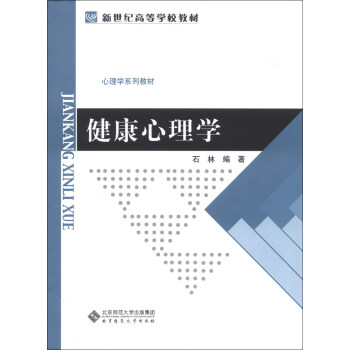
![中醫心理學(第2版)/全國高等學校教材·衛生部“十二五”規劃教材 [Psychology in Chinese Medicine] pdf epub mobi 電子書 下載](https://pic.windowsfront.com/11306331/rBEhVFIkWc4IAAAAAALzWjcMfPkAACs2gMlPsAAAvNy736.jpg)
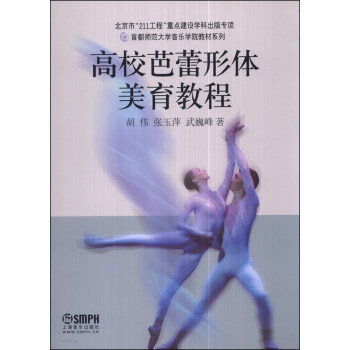

![直升機和傾轉鏇翼飛行器飛行仿真引論(雙語教學精選版)/普通高等院校航空航天雙語教學用書 [Introduction to Helicopter and Tiltrotor Flight Simulation] pdf epub mobi 電子書 下載](https://pic.windowsfront.com/11420749/rBEhVVMr7OcIAAAAAALkRJThzEYAAKm3gOFBAEAAuRc473.jpg)



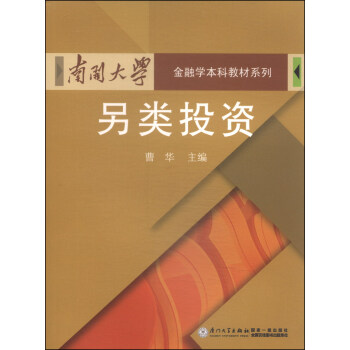
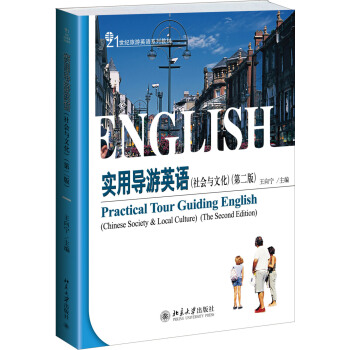
![材料科學研究與工程技術係列:功能材料 [Function Materials] pdf epub mobi 電子書 下載](https://pic.windowsfront.com/11507357/53da10f9N439c57ea.jpg)
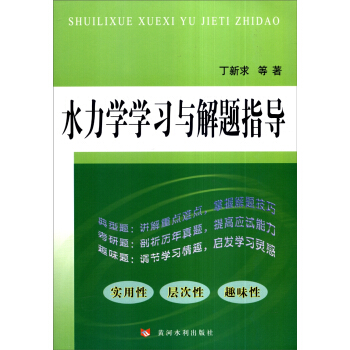
![新編英語教程(第三版)課文輔導3 [A Guide to A New English Course 3] pdf epub mobi 電子書 下載](https://pic.windowsfront.com/11562529/54489580N6c1a3bc0.jpg)
![涉外行業英語係列教材:實用警務英語輔導用書 [Practical English for Police Reference Book] pdf epub mobi 電子書 下載](https://pic.windowsfront.com/11569435/5454a545Nc9deea1b.jpg)


